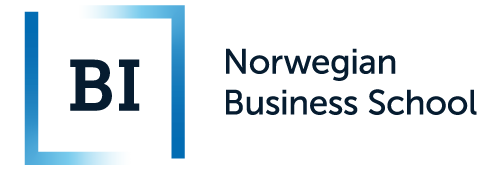GRA 6518 Data Science for Finance
GRA 6518 Data Science for Finance
This course covers the fundamental statistical tools used by quantitative analysts with a focus on forecasting financial series. Several key methods used in modern data science (also known as “statistical inference” and “machine learning”) are presented and applied to financial data.
By the end of the course, students are expected to know:
- Key features of financial data.
- Estimation methods: Least squares, weighted least squares, penalized least squares, maximum likelihood.
- Nonlinear modelling via splines, local regression, local maximum likelihood.
- How to evaluate and select models.
By the end of the course, the students should have developed further the following key skills:
- written communication,
- oral communication,
- ethical awareness in conducting research,
- teamwork,
- problem solving and analysis,
- using initiative, and
- computer literacy.
The students by the end of the course are expected to be able to reflect on the workings and limitations of the different models and algorithms, particularly as applied to financial data.
- Introduction to statistical learning. Features of financial data.
- K-nearest neighbour. The bias-variance trade-off.
- Least squares and linear projections. Weighted least squares.
- Modelling nonlinearities with interaction terms and local regressions.
- Ridge regression.
- Cross-validation.
- Modelling nonlinearities with regression splines.
- Introduction to time-varying models.
- Maximum likelihood (ML).
- Penalized ML. Weighted ML. Local ML. Splines and ML.
- Bootstrap and bagging.
- Introduction to Bayesian inference.
- Approximate Bayesian inference. Markov Chain Monte Carlo.
- State space models. Kalman filter. Introduction to the particle filter.
Relevant financial data will be used throughout the course, both in lectures and in assignments. Students will be given regular assignments, focusing on hands-on application of the material covered in class and on software. Some coding will be necessary, and students will receive assistance with aspects of the assignments related to software and coding. These assignments are not compulsory and are not graded, but will be most useful as preparation for the take-home exam.
Labs will be conducted in R, but students are free to use any other programming language (Matlab, Python, Julia etc).
Please note that while attendance is not compulsory in all courses, it is the student’s own responsibility to obtain any information provided in class.
This is a course with continuous assessment (several exam components) and one final exam code. Each exam component is graded by using points on a scale from 0-100. The components will be weighted together according to the information in the course description in order to calculate the final letter grade for the examination code (course). Students who fail to participate in one/some/all exam elements will get a lower grade or may fail the course. You will find detailed information about the point system and the cut off points with reference to the letter grades when the course starts.
At resit, all exam components must, as a main rule, be retaken during next scheduled course.
Honour Code
Academic honesty and trust are important to all of us as individuals, and represent values that are encouraged and promoted by the honour code system. This is a most significant university tradition. Students are responsible for familiarizing themselves with the ideals of the honour code system, to which the faculty are also deeply committed.
Any violation of the honour code will be dealt with in accordance with BI’s procedures for cheating. These issues are a serious matter to everyone associated with the programs at BI and are at the heart of the honour code and academic integrity. If you have any questions about your responsibilities under the honour code, please ask.
All courses in the Masters programme will assume that students have fulfilled the admission requirements for the programme. In addition, courses in second, third and/or fourth semester can have specific prerequisites and will assume that students have followed normal study progression. For double degree and exchange students, please note that equivalent courses are accepted.
Covid-19
Due to the Covid-19 pandemic, there may be deviations in teaching and learning activities as well as exams, compared with what is described in this course description.
| Assessments |
|---|
Exam category: Submission Form of assessment: Written submission Weight: 50 Grouping: Group/Individual (1 - 3) Duration: 1 Week(s) Comment: Assignment Exam code: GRA65181 Grading scale: Point scale leading to ECTS letter grade Resit: All components must, as a main rule, be retaken during next scheduled course |
Exam category: Submission Form of assessment: Written submission Invigilation Weight: 50 Grouping: Individual Support materials:
Duration: 2 Hour(s) Comment: Final written examination under supervision. Exam code: GRA65181 Grading scale: Point scale leading to ECTS letter grade Resit: All components must, as a main rule, be retaken during next scheduled course |
A course of 1 ECTS credit corresponds to a workload of 26-30 hours. Therefore a course of 6 ECTS credits corresponds to a workload of at least 160 hours.
